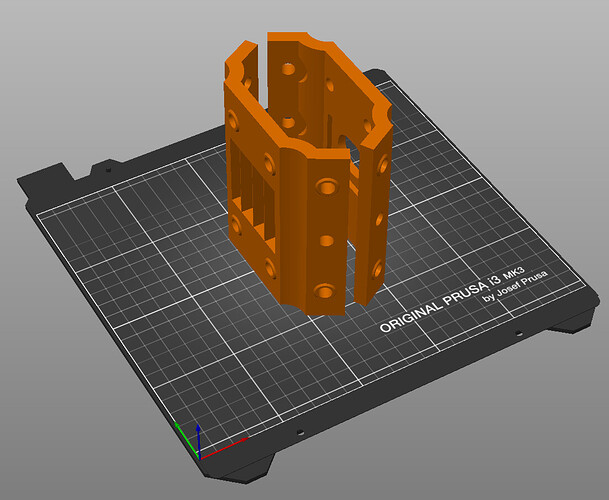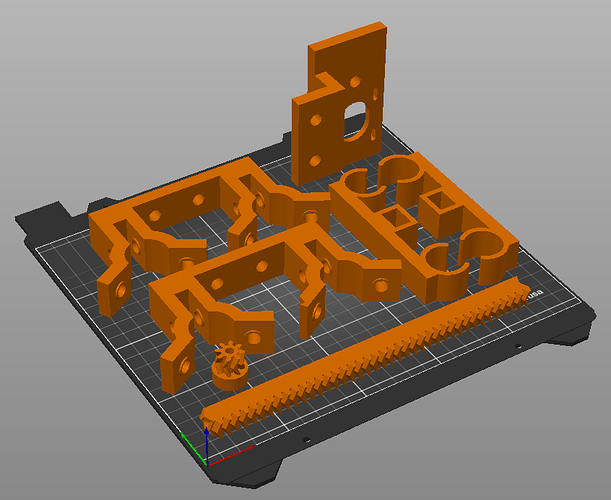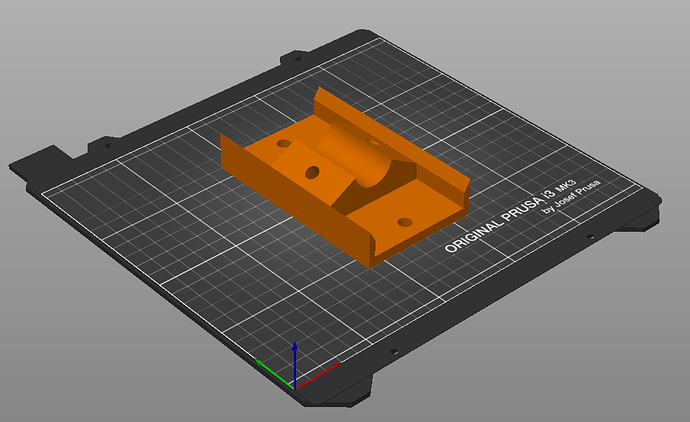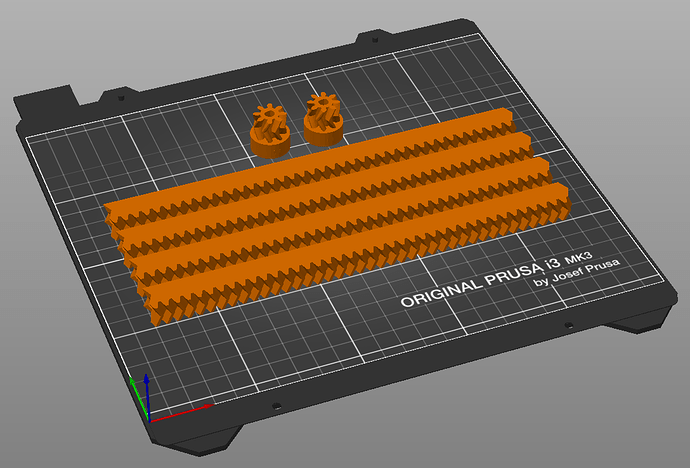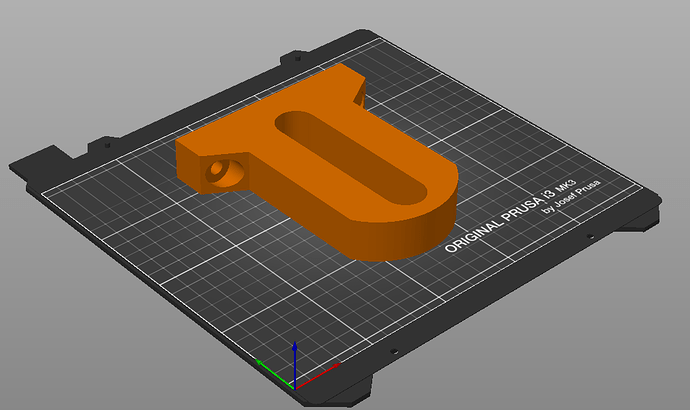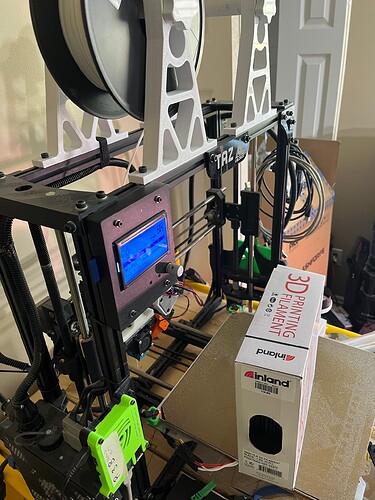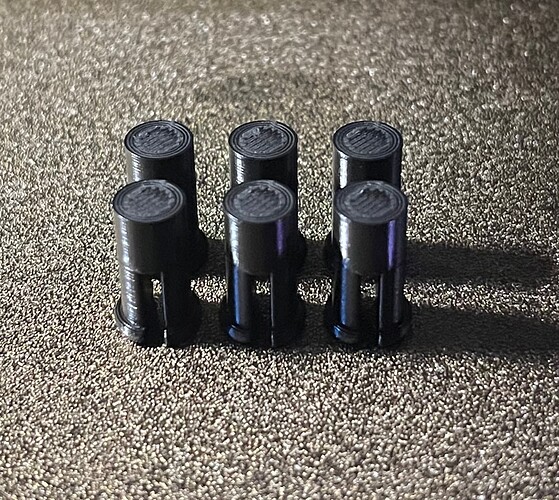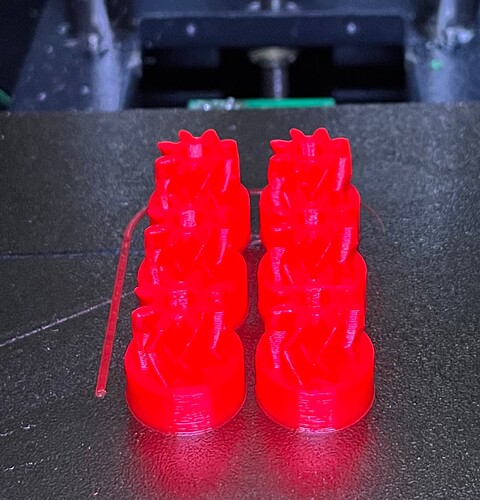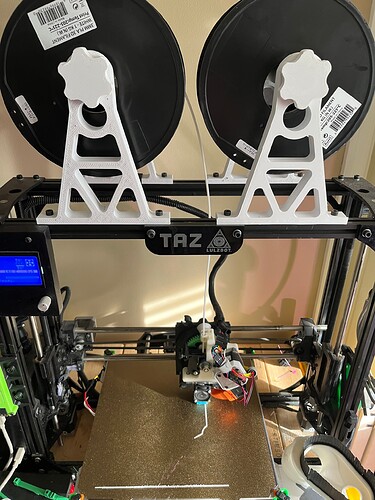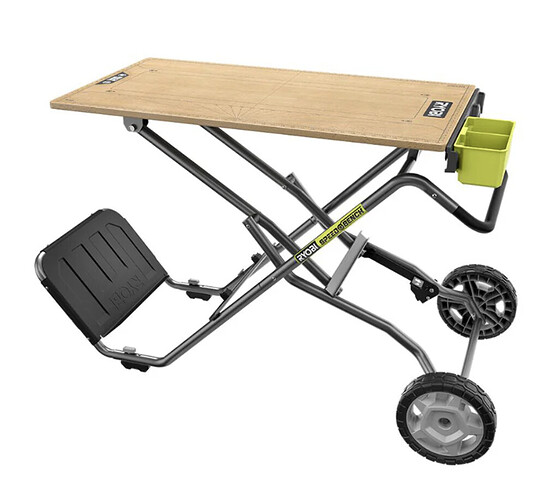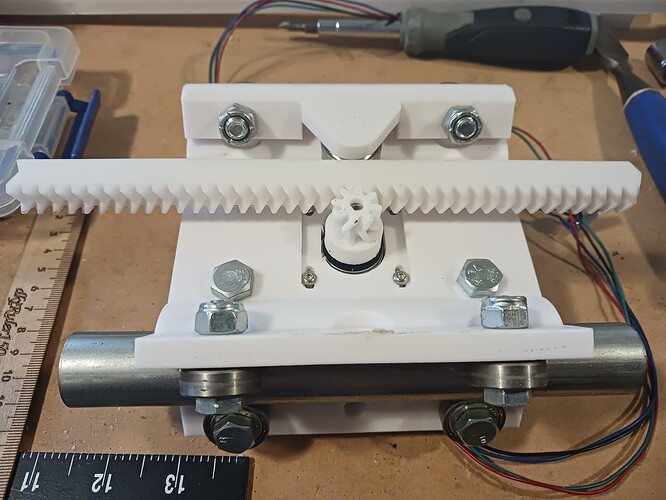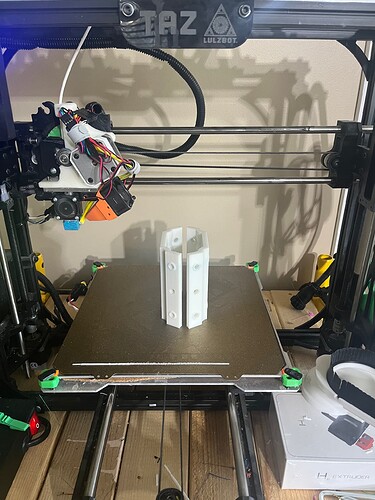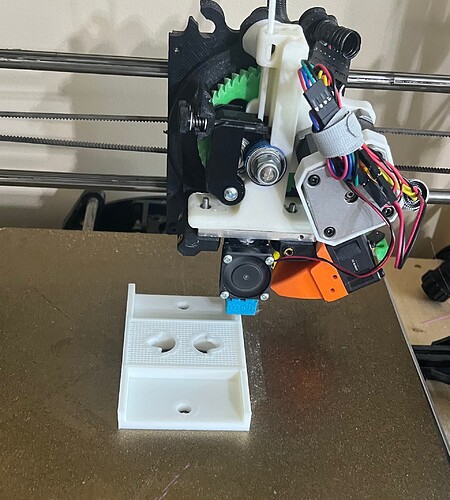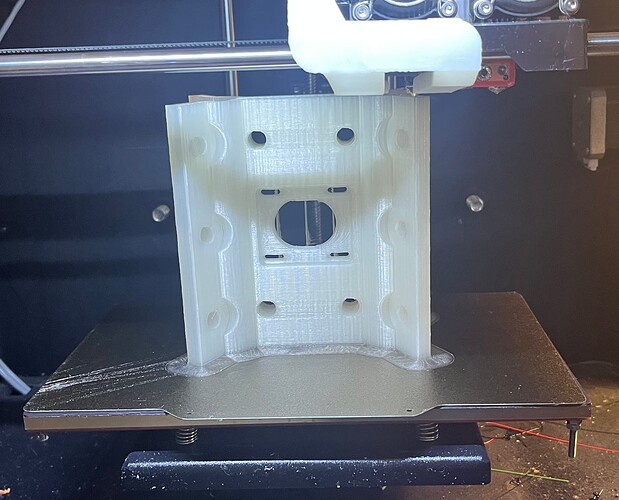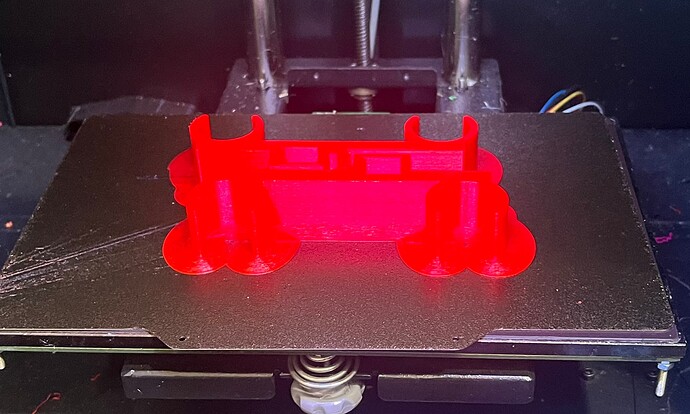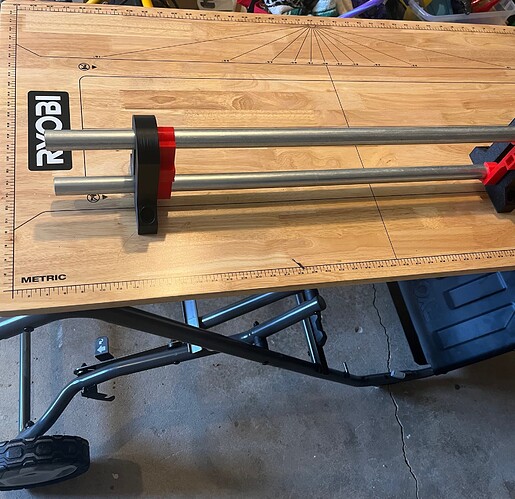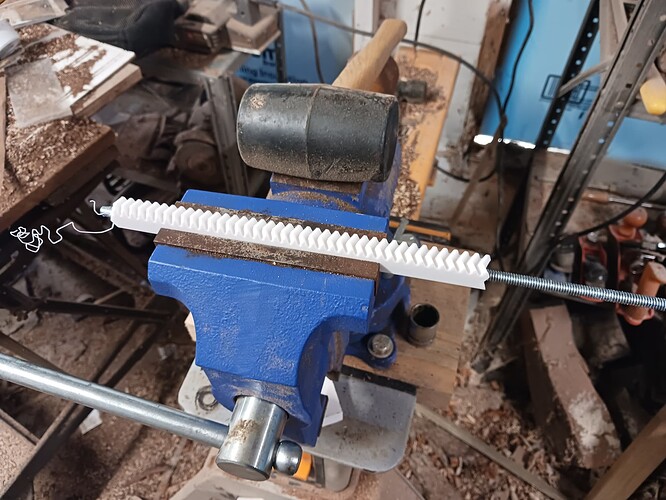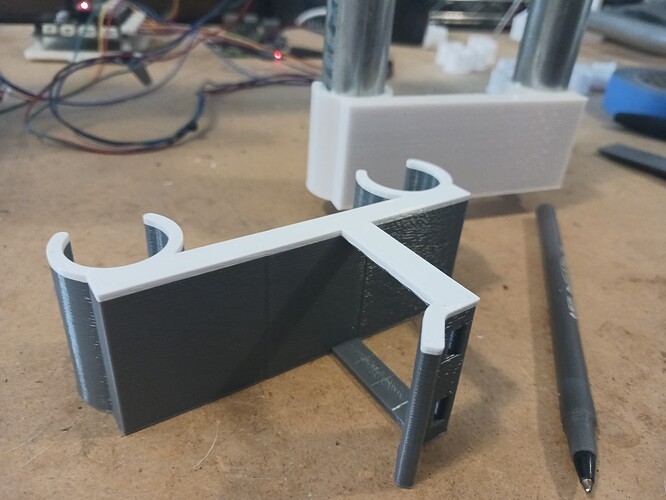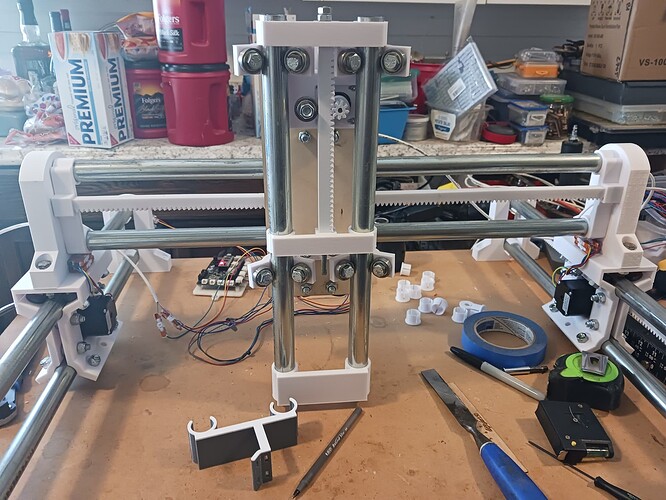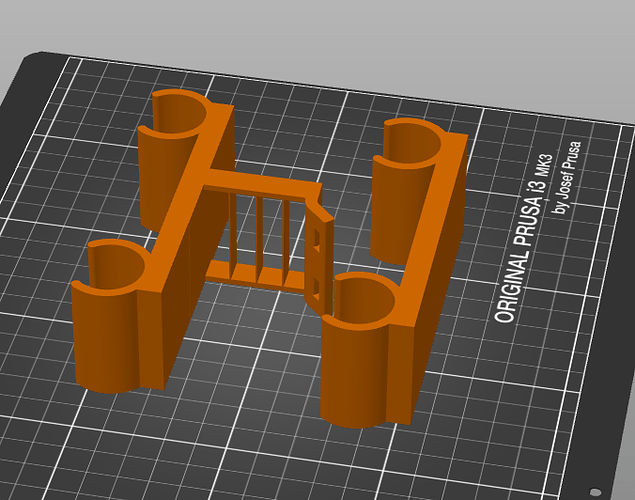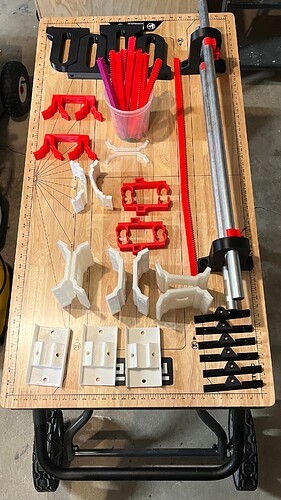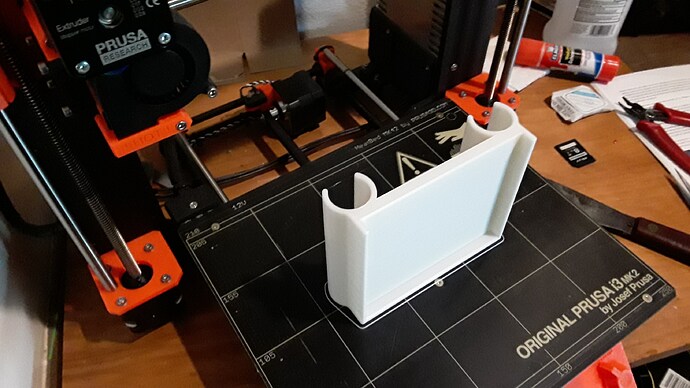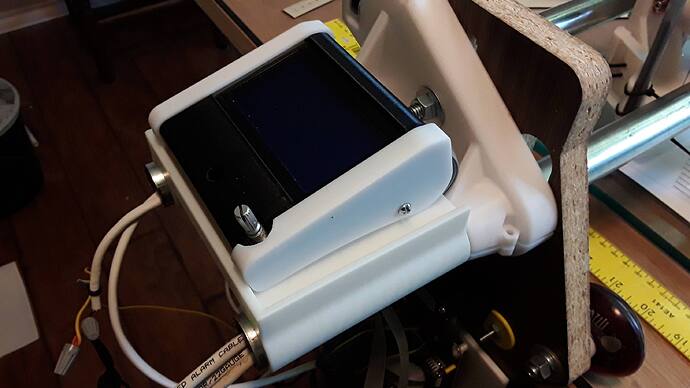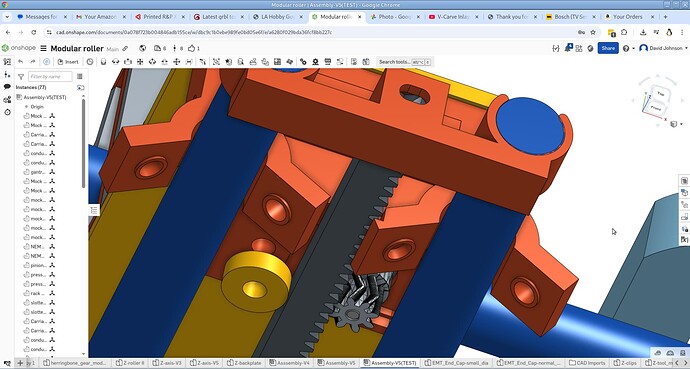Always interesting days when the print farm is running.
The A5M spit out carriage supports like clockwork. Printed 6 of these, using nearly an entire spool of re-PET that I had laying around. More found materials.
It also spit out these pressure clips
Two of the FFCPs were busy spitting out 40 tooth rack segments. 12 in total, 11 in red and 1 in fuscia. One of them also spit out a plate of motor gears. I realized in looking at the TAZ that those looked suspiciously similar. In fact, I reached into the TAZ parts bin and dug out a partial extruder kit and low and behold: it fits the rack like a glove.
Sorry it’s washed out, dark room bright printer.
There’s always fun when using old leftover materials and my older printers.
TAZ was chugging along, about 4x as productive as the FFCPs at big parts. But, Octoprint froze mid-job. No idea why. It just froze there. and octoprint log had zero indication why Octoprint blew up.
Over on the QiDi Tech one (FFCP clone), I cleared the clogged extruder. First time I’ve ever had the Flexion clocg on this machine. I found some old natural PLA in the garage and kicked off a print. The I realized it was air printing. Whiskey Tango Foxtrot? (Ancient, brittle PLA broke)
Meanwhile, found another partial spool of white 2.85mm PLA in a box of ABS spools. I really need to find some local maker with a TAZ to sell or give those ABS rolls to. I just don’t use it these days.
Kicked off another print, this one has for sure enough to print a set if Octoprint doesn’t freeze. I think I may have killed it by having two different machines with browsers open to it. Bad, Jimmy, bad.
Shame I don’t have a filament runout sensor; I may attempt a manual filament change to try and get every last bit out of those remnant spools.
Tomorrow I may do some mocking up the parts on the portable bench they might end up on.
I’m also thinking I’m going to wire up my spare jackpot and maybe even Klipper with an old Pi 4 and an SKR Pro 1.2.
Also realized that you use the machine without endstops so I started noodling over what/how to add some.
Was near 90F today outside, will snow tomorrow PM. Springtime in Colorado. We’ll see how much progress I make.
One other closing crazy idea. I am considering making some little supports to put under the lower EMT, down to the table, essentially making for a poor mans’ SBR.
Tomorrow will be printing more parts, doing the mocking up, and studying the Z axis.
